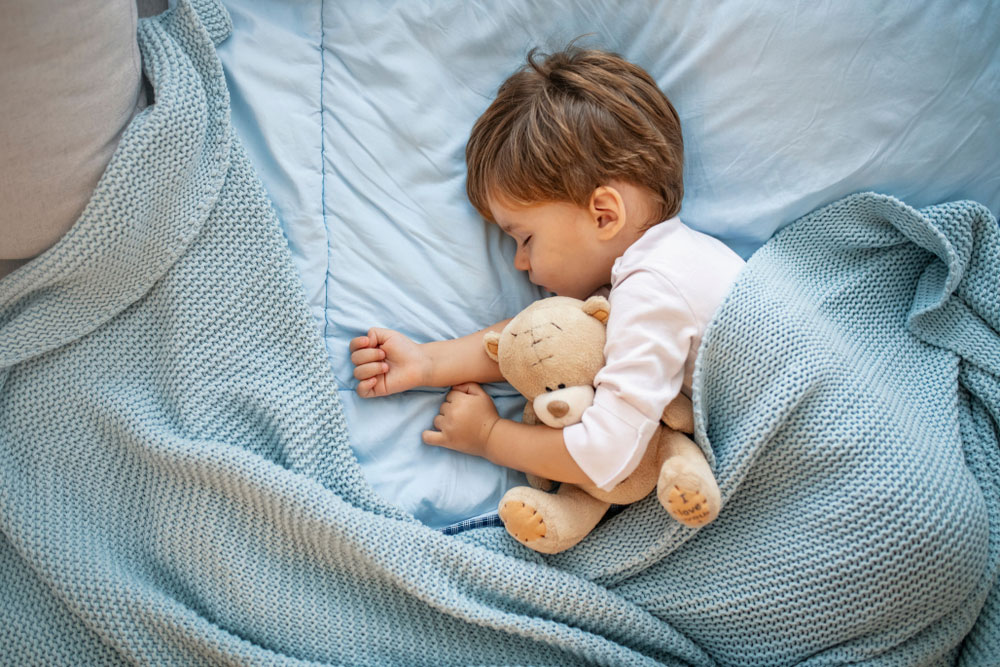


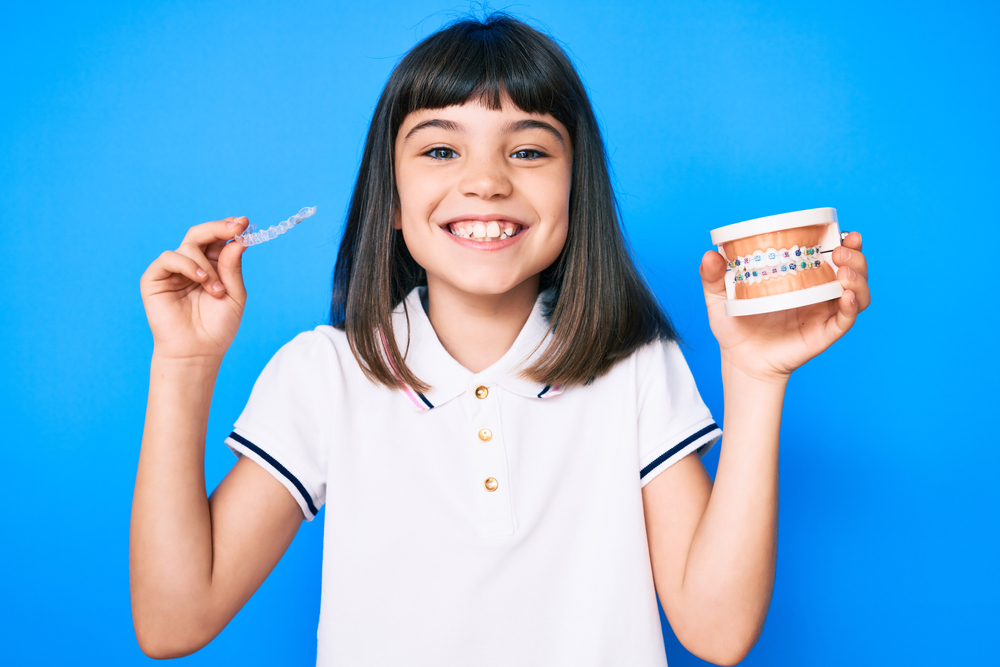
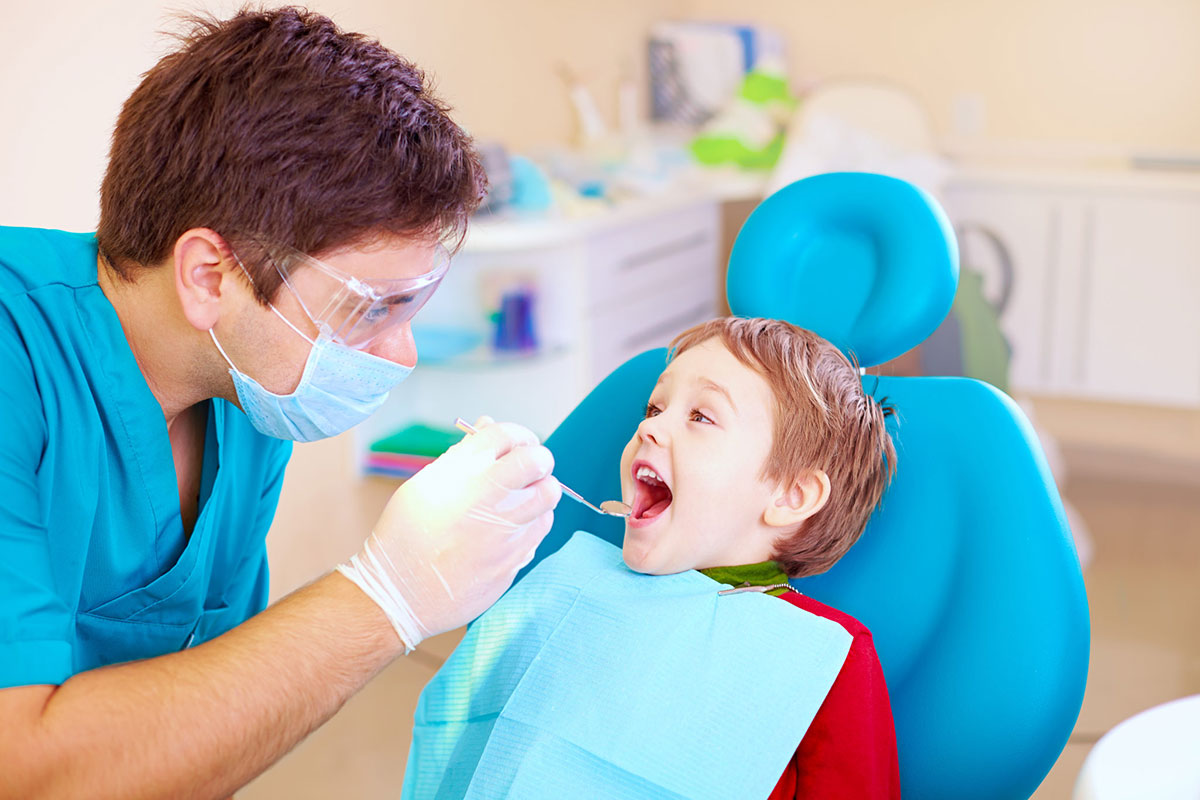
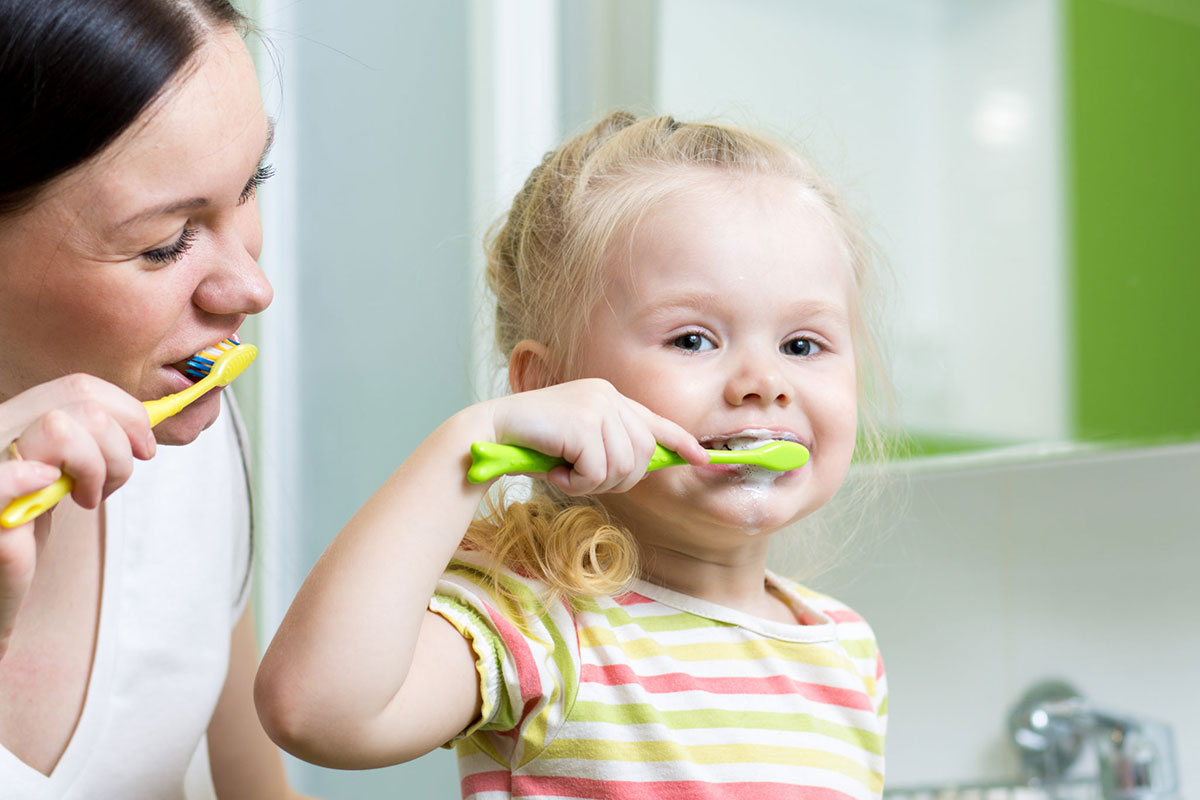
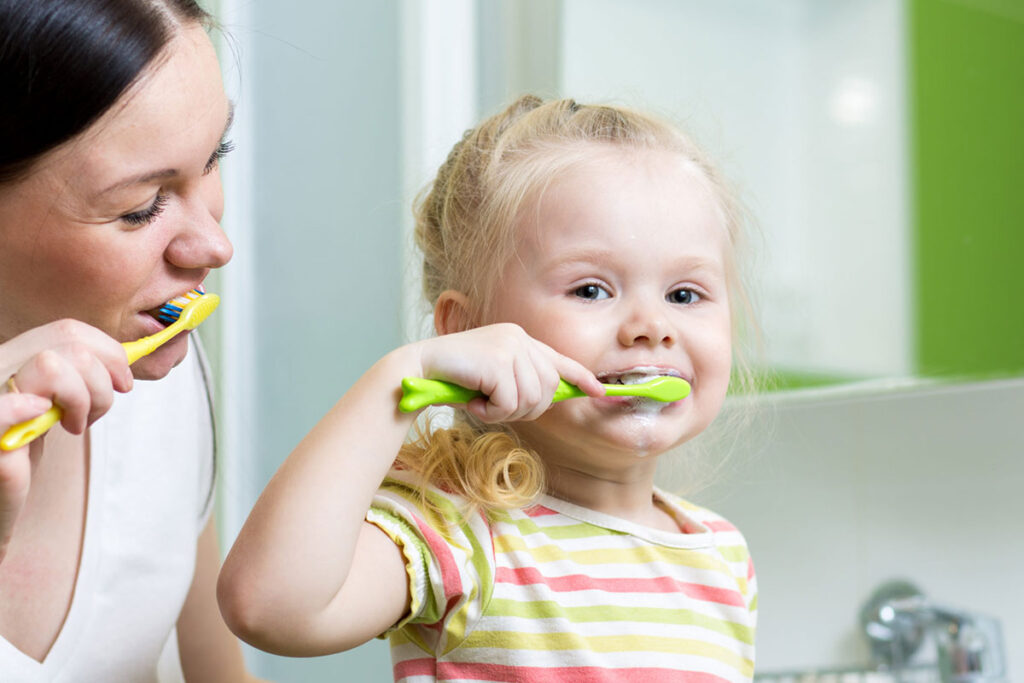
These days, it’s safe to say that most of us have heard of diabetes. And we know that it has a definite effect on day-to-day, overall health. But did you know that there’s also a specific connection between diabetes and teeth? It’s true, diabetes and oral health are closely linked. But before we dive into that, let’s first cover some diabetes basics.
WHAT IS DIABETES?
With diabetes, the body has trouble regulating blood sugar, also called “glucose.” You either can’t produce insulin or you can’t properly use the insulin you make. (Quick reminder, insulin is a hormone made by your pancreas that regulates your blood sugar.)
TYPES OF DIABETES
There are three types of diabetes: Type 1, 2, and gestational diabetes. The first two are long-term, while gestational diabetes happens only during pregnancy.
Type 1 Diabetes – Type 1 is an auto-immune disease and is generally developed and diagnosed in the childhood or teen years. Type 1 diabetes means the body isn’t able to produce its own insulin because the body is attacking the pancreas. Since we’re pediatric dentists, Type 1 diabetes is what we most often see at Kids Mile High.
Type 2 Diabetes – This kind is typically diagnosed in adulthood. Unlike Type 1 diabetes, with Type 2 the body is able to produce its own insulin, but is unable to regulate it properly or it doesn’t make enough of it. The majority of diabetics have Type 2 diabetes.
Gestational Diabetes – Between 3%-30% of pregnant women develop this. Risk factors include family history, obesity, or having it during a previous pregnancy. Gestational diabetes may increase the likelihood of both mom and child getting diabetes later in life.
HOW DOES DIABETES AFFECT YOUR ORAL HEALTH?
Now that we’ve covered the basics, what does the connection between diabetes and teeth look like? You could say that diabetes and oral health have a reciprocal relationship — too much glucose in the bloodstream can cause teeth issues, and, conversely, severe gum or teeth issues can affect your diabetes.
TYPE 1 DIABETES AND TEETH
At Kids Mile High, we see firsthand how Type 1 diabetes affects kids and their teeth. Diligent oral health is hard enough at the best of times for kids, but put together Type 1 diabetes and teeth? Your kids become even more susceptible to issues like cavities and gum disease.
For everyone, sugar-loving oral bacteria feeds off the sugars from food. Acid is created from this feeding frenzy which can then damage teeth. So it’s saliva’s job to wash away the sugars, neutralize the acid, and help bring down the mouth’s pH level. But if your kiddo has diabetes, their saliva might have too much glucose, which can promote more bacteria instead of fighting against it.
High blood sugar is also not kind to the immune system. It’s harder for your child to fight back against pathogens — like oral bacteria.
All in all, this leaves diabetic kids more vulnerable to oral issues like:
Diabetes and tooth decay – Because kids with diabetes are more likely to have higher sugar levels in their mouth, they have to work extra hard to brush and floss effectively against tooth decay. Plaque that’s stuck to teeth can demineralize enamel and dentin, leading to kids’ tooth decay and cavities.
Diabetes and gum inflammation – With Type 1 diabetes and teeth, a tell-tale sign of poor oral health is inflamed gums. Does your kiddo have red, swollen, or bleeding gums? If so, we suggest making an appointment right away at Kids Mile High. Dr. Paddy, Dr. Roger, or Dr. Meredith can examine your kid’s teeth to see how severe their gum inflammation is and suggest a plan to prevent it from turning into gum disease.
Diabetes and gum disease – Gum disease is not only an infection in the gums, but can also affect the teeth and underlying bone. For kids, gum disease is an especially serious issue since their teeth, gums, and bones are still developing. Having diabetes and gum disease can mean a longer healing time too but, rest assured, gum disease treatment is possible.
Gum disease has also been shown to affect overall health, including making diabetes worse. A study shared by the American Dental Association explained that some of the germs in infected gums can leak into the bloodstream through activities like chewing or brushing your teeth. This kick starts a reaction in the body’s defense system resulting in changes like raising blood sugar.
TEETH-FRIENDLY TIPS WHEN YOUR CHILD HAS DIABETES
Your Denver-area pediatric dentists are confident that our young patients can conquer anything. So if our little superheroes happen to have Type 1 diabetes, we know they can still have healthy teeth.
Here are a few suggestions from your Denver pediatric dentists for diabetes and teeth:
Tip #1: Make sure your child has regular dental exams
Schedule at least two check ups for your kids every year and be sure to update us on how your child’s diabetes is doing. The more info, the better! And even if you or your child don’t see any signs of a dental problem, our team can spot any early symptoms and suggest prevention or treatment.
Tip #2: Create a solid oral hygiene plan
Even though diabetes and oral health can be a challenging combination, a great oral hygiene routine goes a long way. Make sure your child flosses once a day and brushes well at least twice a day with fluoride toothpaste and a soft-bristled toothbrush. Let them pick out their own toothbrush and toothpaste to make oral care more fun and personal.
If they’re old enough, a kids-safe mouthwash helps. And if flossing is daunting for your kids, try easy-to-use floss picks.
Tip #3: Be careful with sugar
We don’t have to say this one twice! Understandably, it’s hard for kids to stay away from sugar 100% of the time… they’re kids! But working with your child to plan out their sugar do’s and don’ts helps keep them on-track and you in-the-know.
COME FOR FUN DENTAL CARE AT KIDS MILE HIGH!
If you’re concerned about your child’s Type 1 diabetes and their teeth, we’re here to give your child the top-notch dental care they need. And they’ll have fun too!
Schedule an appointment today at our Englewood, Thornton, or Central Park office.
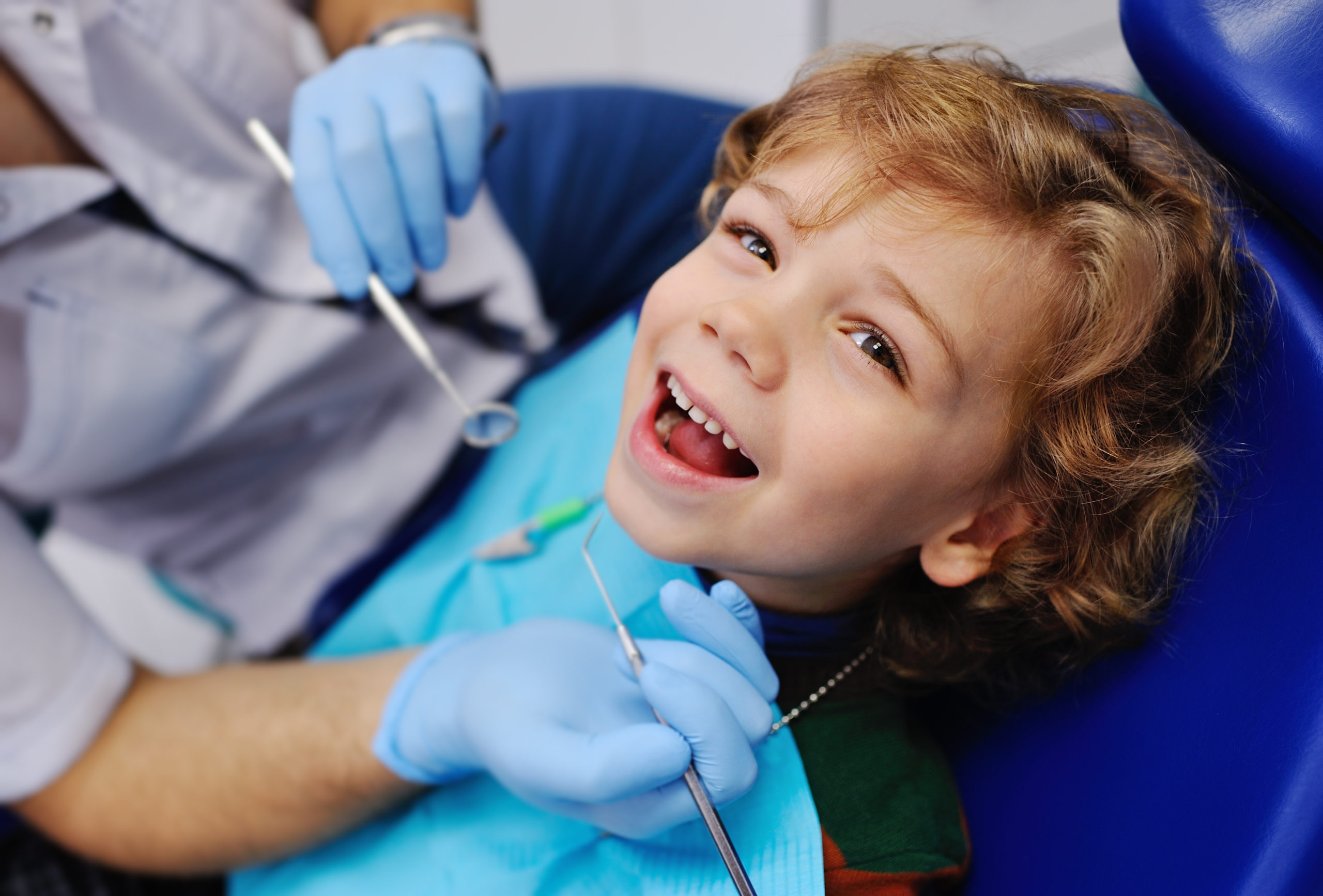
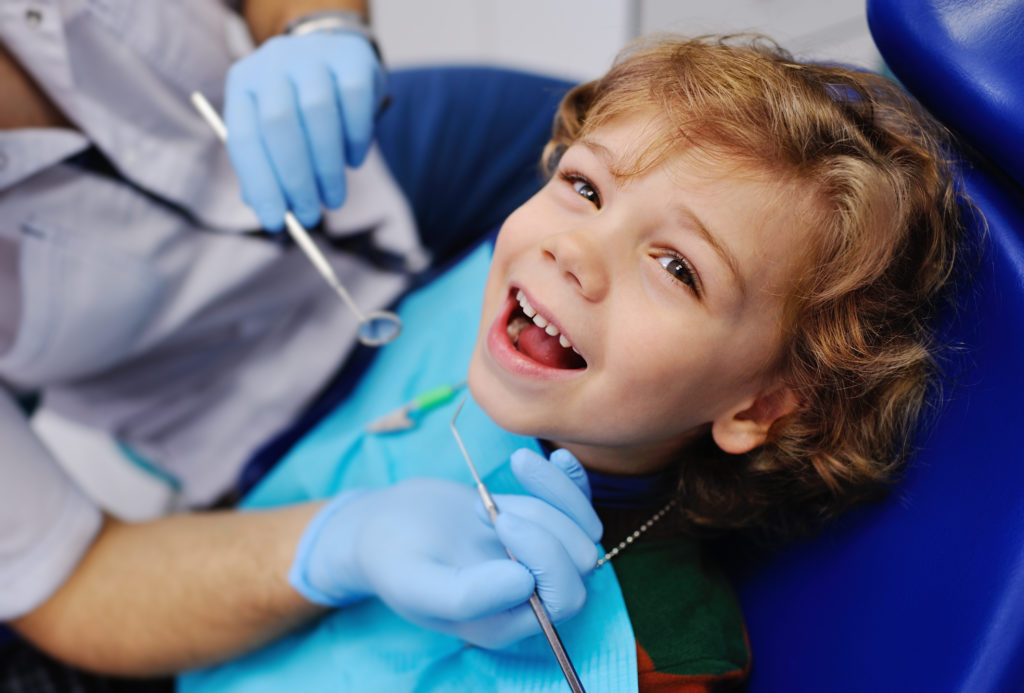
Kids put a lot of energy into trying to get away with not brushing their teeth and often have a complete and utter lack of fear when it comes to things like running on hardwood floors with socks or playing catch with unwieldy items. So it’s no surprise that cavities can rear their ugly heads in children, tooth decay becomes an issue in kids, and baby teeth can get knocked loose before their time.
While many dental issues might not seem like a big deal when it comes to kids because they’re going to lose those baby teeth anyway, these first teeth serve important functions — including saving space for the permanent teeth and helping with speaking and chewing. Staying on top of your little one’s oral care is important. We see some common dental problems in kids time and time again at our Englewood, Central Park and Thornton pediatric dentistry offices but, thankfully, each issue has a fairly simple solution.
Do your kids’ permanent teeth look yellow, right from the get-go? While it might be alarming to see “yellow” permanent teeth on kids erupt beside a whiter baby tooth, no need to worry. It’s normal! Enamel on baby teeth is thinner than on permanent teeth so baby teeth look a lot whiter next to adult teeth and the difference will look less noticeable once more adult teeth start coming in. There’s also more dentin on adult teeth which makes teeth look more yellow under the translucent enamel.
FOODS AND DRINKS THAT STAIN TEETH
On the other hand, yellow teeth on kids could be a sign of dental problems if you notice the color getting worse over time. Inadequate brushing and flossing leads to discolored teeth, as does eating a lot of staining foods — foods with lots of dyes, or dark colored fruits, veggies, sauces, and drinks.
TOOTH INJURY
Yellow teeth on kids can also happen from tooth injuries. Blood vessels may break when there’s trauma to teeth, making them appear yellow, brown, gray, or black. And after tooth trauma, burst capillaries can cause blood to collect in the canals within the teeth, making the teeth look discolored. Injury may even affect the health and appearance of your child’s tooth enamel.
GENETICS
It’s not always external factors that cause yellow teeth in kids. Sometimes you just can’t help it since genetics can play a role in the color of teeth. Thin tooth enamel can be genetic, which we mentioned previously can make teeth appear yellow. And thin tooth enamel can also put your child at more risk of tooth decay.
Supplements
In general, giving our kids supplements is for the good of their health, but too much of certain supplements can cause yellow teeth. For very young kids, fluorosis can happen, which is when baby teeth are exposed to excessive amounts of fluoride in the water, toothpaste or fluoride-fortified foods. Fluorosis can lead to white or brown spots on teeth, which makes enamel look yellow.
Medical Conditions
Some medical issues can contribute to yellow teeth in kids. Hepatitis, jaundice, and other medical conditions can discolor teeth. Using certain medications during pregnancy or early childhood such as tetracycline can cause a bright yellow appearance in young children’s teeth and a brown tinge to teeth in older kids.
If your kids’ yellow permanent teeth are a concern to you or your child, we suggest coming in to see as at Kids Mile High Pediatric Dentistry. Tooth decay and cavities or gum disease might be lurking just around the corner. Dr. Paddy, Dr. Roger, and Dr. Meredith are more than happy to take a look and let you know if the yellow teeth on your kids are fine or if there are dental problems to address.
At Kids Mile High, the problem we see the most is definitely tooth decay in children. In fact, according to the Centers for Disease Control and Prevention, tooth decay and cavities in children is one of the most common chronic conditions children in the United States experience. About 20% of kids aged five to 11 and 13% of teens aged 12 to 19 have at least one untreated decayed tooth. If not dealt with, cavities can cause infection, discomfort or tooth pain and put a damper on speaking, chewing, and even learning.
CAUSES OF TOOTH DECAY IN KIDS
Tooth decay in kids, just like in adults, is caused by bacteria. Foods that have sugars and starches can leave a sugary film on teeth which activates the bad bacteria in your mouth. While this bacteria is happily eating up the sugars, acid is produced. The bacteria, acid, and your kids’ saliva all together forms plaque that sticks to teeth, and, if not brushed away, can lead to cavities. And the acids themselves can eat away at protective tooth enamel, making your kids’ teeth more susceptible to tooth decay.
There can be a higher risk of tooth decay in kids if they have:
HOW WE TREAT TOOTH DECAY IN CHILDREN
So what do the dentists at Kids Mile High do about children’s tooth decay? Well, we’re big on preventative dentistry and the first thing we do is encourage regular check-ups and educate parents and kids on proper brushing and on ways to keep little mouths healthy. In addition to cleaning children’s teeth and scraping off that yucky plaque and tartar, we give fluoride treatments and offer sealants, which are extremely effective in strengthening the enamel to ward off tooth decay. If a cavity is found, no worries, it’s not the end of the world! We fill cavities with Herculite composite resin, which is super strong and matches the color of the other teeth so no one will even know your kid has a filling. In cases of severe tooth decay, a kids dental treatment like NuSmile Pediatric Crowns might be suggested, which are tooth-like white crowns especially for kids. These can be placed to restore the tooth and keep it in place until it’s ready to fall out.
The Tooth Fairy is a frequent visitor of any house with kids and the majority of the time, a loose tooth is caused by an erupting grown-up tooth. When a cute, little baby tooth starts to wiggle, it’s getting ready to be replaced with its permanent counterpart and your dentist rarely has to help because the tooth falls out on its own. However, if it doesn’t seem to be vacating your child’s mouth in a timely manner, Dr. Paddy, Dr. Roger, or Dr. Meredith can step in and speed up the process.
KIDS DENTAL TREATMENTS
When there’s injury or trauma to a baby tooth, we do everything we can to save it if it’s too early to extract. Our main list of options includes kids crowns for a missing tooth, a root canal on a baby tooth, and dental space maintainers.
CAN KIDS GET A CROWN FOR A MISSING TOOTH?
You might be familiar with crowns for adults so it makes sense to wonder, “Can kids get a crown for a missing tooth?” Yes, one solution to rescue injured or damaged teeth includes a kids crown for a missing tooth like NuSmile Pediatric Crowns.
ROOT CANAL ON A BABY TOOTH
A root canal on a baby tooth might sound excessive but a dentist might recommend it to save a damaged or decaying tooth. Cavities in a baby tooth that are close to a nerve can be painful because the nerve is more exposed, and even though a filling or crown is often the solution for a cavity, these might cause more pain or lead to an abscess. In addition, fillings or crowns won’t heal the nerve. However, a dental treatment called a pulpotomy — or baby root canal — is a treatment that can save the tooth and resolve any pain.
DENTAL SPACE MAINTAINERS
Now if a tooth is actually removed, the space that’s left typically needs to be kept open with a kids dental treatment like a dental space maintainer. Without one, the teeth around the empty space might start shifting to fill the space and either crowd or prevent the adult tooth from coming in later. There are four types of dental space maintainers and they’re either fixed or removable. The kind we suggest depends on where the space is in your child’s mouth and how many teeth are missing.
If your child or teen experiences a damaged or loose permanent tooth, be sure to call the friendly team at Kids Mile High right away so they can provide a kids dental treatment for the issue.
Gum disease occurs when plaque and tartar build up at the base of the teeth near the gums causing them to get swollen and red. If not treated, gum disease in children (and adults, too!) can lead to tooth loss and damage to the bones. Prevention is key here, which is why regular dental check-ups, proper oral hygiene, and eating foods for healthy teeth are important (see our guide to brushing your child’s teeth for the basics).
At Kids Mile High, we can treat mild gum disease, known as gingivitis, with professional cleanings, and by helping your child establish a good brushing and flossing routine. If the condition gets worse, it might require a kids’ dental treatment like deep cleaning, special rinses, antibiotics, or other medications.
Sensitive teeth might seem like an issue only the older crowd deals with but like we mentioned earlier, kids actually have thinner enamel than adults with their baby teeth. When enamel gets worn down, the gums can recede or cracks can form on the tooth exposing nerve endings. This leads to pain when eating or drinking anything hot or cold. To combat this the dentists at Kids Mile High can apply sealants to strengthen the enamel and if a cavity is present, a filling may be in order. When brushing at home, be sure to use a soft-bristled toothbrush for your kids.
You may have noticed the main theme running through all of these kids’ common dental problems is the importance of prevention. Remember that yellow teeth on kids isn’t necessarily a cause for alarm, but regular check-ups, diligent brushing and flossing (with optional extras like kid-safe mouthwash) will go a long way in helping reduce dental problems in kids such as tooth decay and gum disease. Plus, your kid will nab a spot in the Kids Mile High Pediatric Dentistry’s super prestigious Cavity-Free Club!
Schedule an appointment today with Dr. Paddy, Dr. Roger, or Dr. Meredith at the always-entertaining and fun Englewood, Central Park, or Thornton, CO pediatric dentist locations and ensure your child’s smile is healthy. Whether you’re wondering, “Can kids get a crown for a missing tooth?” or you’re concerned about damaged or yellow teeth, we’re here to help your child have the best teeth possible!
NEED A KIDS DENTIST IN DENVER? BOOK A FREE CONSULTATION TODAY!



8 Fun Outdoor Activities for Kids in Denver
So summer days have wound down and it’s back to school! But that doesn’t mean the outdoor fun’s over! At Kids Mile High, we’re big on enjoying the outdoors year-round, and luckily, there are many outdoor fall activities in the Denver area for kids to choose from!
To help you decide which things to do with your kids in Denver, we’ve put together a round up of our favorite 8 family-friendly outdoor activities you can enjoy right now.
Did you know that the Denver Zoo has welcomed kids (and adults) for 125 years? At the Denver Zoo, generations of kids have gotten “up close and personal” with a Siberian tiger, learned what a clownfish was long before Finding Nemo, and hand-fed hungry stingrays their afternoon snack.
Today, the Denver Zoo has over 10 different Exhibits that span 80 acres, plus daily demonstrations, small-group animal meet-and-greets, and special events. From elephants to orangutans, sloths to snakes, the Zoo is home to 3,000 creatures from all over the world, so it’s no surprise that it’s an experience that sparks a love of animals in many who visit.
To help visitors find their way around, The Denver Zoo offers an app with a real-time map and info about the animals you’ll see. You can also use the app to buy your timed-entry tickets in advance or schedule your visit if you have a membership.
2. Hudson Gardens & Event Center
This 30-acre destination outside of Littleton boasts exhibits, trails, open spaces, and event venues. Pack a lunch for an afternoon of free-form exploration along nature trails, race against each other — adults vs. kids? — in a game of Pokémon Go, or practice your navigation skills with some geocaching.
Or get in the Halloween mood with a visit to Magic of the Jack O’Lanterns. For all of October, Hudson Gardens is hosting this family-friendly event featuring 5,000 hand-carved pumpkins and extraordinary pumpkin displays. Kids will also love the magical carnival, a glowing seascape, dinosaurs, and dragons. No doubt you’ll find inspiration for your own jack o’lanterns with this fall activity.
It’s safe to say that Red Rocks is a world-renowned destination. After all, how many amphitheatres boast amazing natural acoustics with the help of such spectacular rock formations?
Concert venue aside, we think exploring Red Rocks’ other-worldly landscape is one of the best outdoor activities for kids and families in Denver. The park has five main trails for hiking and biking: we suggest reading up on them beforehand to figure out which would work best for your family. Some are short, some are longer, and some have rougher terrain or steep drop offs that require extra caution with kids. But you can bet that all the trails have beautiful landscapes and views that will keep everyone “ooo-ing” and “aahh-ing.” You can also bring the family dog! (On leash, of course.)
The must-do activity for dinosaur lovers young and old? Dinosaur Ridge in Morrison. If your kids haven’t visited yet on a school field trip, take a family trip out to see real dino footprints, fossils, and bones… oh my! Cool fact? Dinosaur Ridge was the first place in the world where a stegosaurus was discovered!
The main visitor’s center is open year round while the Discovery Center is closed from November 1st to May 1st. Local’s tip: Visit Red Rocks and Dinosaur Ridge together since they’re in the same area!
5. Washington Park
Many Denver, Thornton, and Englewood residents consider Washington Park their go-to spot for a relaxing escape right in the city. With 155 acres of paths, trails, greenspace and gardens, plus a couple of lakes, Washington Park has many options for a slow weekend outing. Pack a picnic, a frisbee, or go for a walk or bike ride!
For a unique experience, rent a colorful surrey, deuce coupe, or chopper bike from Wheel Fun Rentals for travelling along the park’s 2.75 mile paved loop. They also have rentals on paddle boats, kayaks, paddleboards, canoes and paddle boats for on-the-water excursions.
6. Confluence Park
Yes, another park on our Kids Mile High list of outdoor activities in Denver, but this one’s different. Bring the kids to Confluence Park to watch kayakers brave rapids — yes rapids in downtown Denver! There’s also some great Instagram-worthy spots for chronicling your outing.
Confluence Park is close to other top activities for kids in Denver like the Downtown Aquarium and the Children’s Museum of Denver at Marsico Campus. So, if your outdoor adventure day starts to get rained out, you have somewhere fun nearby for plan B.
This unique kid activity is a bit farther out than the others we’ve mentioned but well worth a visit. About an hour’s drive northwest from Denver, you’ll arrive at the tiny town of Nederlander, home of the Carousel of Happiness.
Little kiddos will love the magic of the carousel’s hand-carved animals, finding just the right one to sit on to enjoy their ride. Adults will appreciate the story and craftsmanship of the carousel’s animals, and the history behind the 1910 Looff carousel frame and 1913 Wurlitzer band organ. You and your kids might even like to “adopt an animal” to support the Carousel.
With older kids, try this Denver outdoor activity that’ll get you moving, thinking, and working together. Plus, you might just find out more about the city you live in! Using your phones, teams make their way to different points of interest in the city, both well-known landmarks and lesser known ones. It’s like the Amazing Race but in only 2-3 hours and in one city. Sign up your family team at Urban Adventure West.
That wraps up our top 8 kid-friendly outdoor activities in Denver to try in the Fall! Your Kids Mile High dentists Dr. Paddy, Dr. Roger, and Dr. Meredith would love to hear all about your children’s Denver adventures when we see them next. Book their upcoming appointment with the Kids Mile High team today!


For kids, summer is all about having fun and eating yummy foods and treats that beat the heat. But even though summer’s more relaxed, it’s important that kids continue practicing great oral care. Healthy teeth and gums are a year-round event!
To help you and your kids keep oral health top-of-mind, we’ve got six practical ways to keep your kids’ teeth healthy and safe this summer.
At Kids Mile High, we’re all about kids playing their hearts out and staying active. If this sounds like your family, no doubt summer includes a few soccer games in the park or street hockey with friends. Or maybe you’ve lined them up for summer sports camps. To keep their teeth safe, we suggest getting your sports-loving kiddos their very own custom fit mouthguards.
A mouthguard for kids, like the Under Armour® one we offer at Kids Mile High, is a definite must-have for sports where there’s a chance of trauma to the face. A custom fit mouthguard definitely protects teeth, making sports a worry-free activity when it comes to your child’s precious smile. According to the American Dental Association (ADA), trauma to the teeth during sports is 60 times more likely without a mouthguard! And we’ve seen that a custom fit mouthguard provides the best fit and protection.
But did you know that a mouthguard not only contributes to keeping your kids’ teeth safe, it also helps protect their entire head and neck from serious injuries. A mouthguard protects your kids during sports by:
Think of a custom mouthguard like a shock absorber against impacts to the jaws. Instead of your child’s upper and lower teeth clashing together, a custom fit mouthguard provides separation between their teeth. This helps prevent concussive effects to the base of the brain.
How do I Get a Custom Fit Mouthguard for My Child?
Now that you know a little more about the importance of a custom mouthguard, you’re probably thinking, “How can I get my hands on one for my child, ASAP?” It’s easy! Pop on over to Kids Mile High.
Book an appointment with us at our Englewood, Central Park, or Thornton office. We’ll do a quick and painless impression of your kiddo’s mouth. The impression will then get sent to Under Armour who create a custom fit mouthguard that’s a perfect fit for your All-Star.
One last benefit of our Under Armour custom fit, high-quality mouthguard is that it not only protects kids’ teeth, head, and neck, it also eliminates teeth-clenching. That’s really helpful for some athletes since it means they can focus on their game and not on keeping their mouthguard in place.
A healthy, balanced diet applies 365 days a year, however, we know that sometimes summer eating can end up a little looser than during the school year. At times, your family’s eating schedule may change in the summer — days are longer, you’re eating on-the-go, or grabbing fast food while on a road trip. Maybe your kids graze more or eat dinner a bit later. There’s more picnics, bbqs, snacks, and… the ice cream truck!
But with a different eating routine, you can still offer a healthy, balanced diet to support good oral health care for your kids. One place to start is including kid-friendly, summer-season fruit and veg every day.
Include Summer-Fresh Fruits in Every Meal
It’s easy to “eat the rainbow” with summer’s juicy strawberries, blueberries, raspberries, blackberries… all the berries! Keep these easy-to-eat fruits on-hand to add to snacks and meals. Dark-colored berries contain polyphenols, a chemical that helps prevent bad bacteria from sticking to teeth and gums. That’s a total win for healthy teeth against tooth decay! And the vitamin C in berries helps with avoiding soft tissue inflammation.
Now, you might be wondering about that summertime heavy-hitter: watermelon. Made of 92% water, we all know watermelon is a total thirst quencher and that’s great for healthy teeth and gums. All that water helps get saliva going so that bacteria and plaque gets washed away. Watermelon is also chock full of vitamin A, something that makes teeth super happy. Vitamin A is key for healthy gums and building strong tooth enamel. And if that wasn’t enough, did you know that watermelon also acts like a toothbrush? Its texture brushes teeth every time you bite down into a juicy slice!
With all this talk about water, let’s talk about drinks and teeth. Water is a go-to: make sure your kids always have a water bottle of fresh, cool water wherever they happen to be. Milk has calcium and vitamin D for healthy teeth and gums. And homemade lemonade lets you control how much sugar goes into it.
So what drinks aren’t good for teeth? It’s safe to say that even though kids might want a slushie, soda, or sports drink to cool them down, these really are a few of the worst drinks for teeth. High sugar content, acidity, and carbonation erodes tooth enamel over time, making kids’ teeth more susceptible to tooth decay.
We know… it’s not always possible to avoid these sugary drinks, they’re a welcome treat once in a while. Encourage you kids to swish with water afterwards to rinse out some of the sticky sugars.
Prepare Cut-Up Veggies For Grab-n-Go Snacks
If you don’t already do this during the school year, try it out during the summer! Every few days, cut up a bunch of raw veggies and make them available in the fridge for quick access. When you’re heading out to the park, a day trip, or just lounging at home, a ready supply of teeth-friendly veggies encourages your kids (and you!) to eat them since there’s no prep. All you have to do is grab a few handfuls and add them to meals or pack them up with your other snacks.
Make these teeth-friendly veggies easily available every day:
If you have a garden, a great way to encourage kids to eat veggies is letting them pick straight from the garden. There’s nothing like a baby tomato picked and eaten right off the vine! Or go on a fun adventure to your favorite Denver-area farmer’s market with your kids and let them pick out veggies they like.
Veggies have a lot of the same teeth-friendly vitamins and minerals as fruits, with the added bonus of having less sugar. Hard, crisp, or crunchy veggies are great for helping clean plaque off teeth. Veggies like carrots and celery are also healthy foods for children’s teeth because chewing them stimulates gums and generates mouth-cleansing saliva.
Another way to include teeth-friendly fruits and veggies into your kiddos’ summer diet is blending their favorites into smoothies. Add yogurt, coconut milk, or nut milk for protein. Then take your smoothie blends to the next level and freeze them into popsicles!
We at Kids Mile High can get behind this seven-layer rainbow smoothie that you can easily pour into molds and turn into rainbow popsicles. Of course, feel free to switch up any of the fruits for ones your kids love. Consider making these together with your kids for a fun summer activity.
In summer, kids get a break from the rush to get to school in the morning, or the excitement of after-school activities and homework, so there’s more time to slow down and practice diligent oral hygiene. Ensure your kids brush their teeth twice a day and floss once. Kids who don’t brush their teeth regularly are at risk of plaque build up, tooth decay or cavities, and even gum disease.
Let’s go through oral hygiene for kids step by step. Brushing teeth for kids starts by making sure their toothbrush is in good working order. If it’s looking a little worse for wear, toss it and pick out a new, soft-bristled one. Dr. Paddy, Dr. Roger, and Dr. Meredith agree with the American Association of Pediatric Dentistry (AAPD): change your toothbrush every three to four months.That’s how long it typically takes for toothbrush bristles to start fraying and lose their effectiveness. As for toothpaste, make sure to use one with fluoride. You should also have dental floss or floss picks at the ready.
Floss first, then brush teeth at a 45 degree angle, brushing all surfaces as well as the tongue, palate, and inside the cheeks. Finish with a swish (and spit!) of alcohol-free mouthwash for kids and your youngster is good to go.
Mouthwash for kids
Now you may be wondering, what is the best mouthwash for kids with braces? Typically any child-safe, alcohol-free mouthwash will do. However, our Kids Mile High orthodontist, Dr. Owens, has a few tips to consider when looking for a mouthwash for braces.
First, find a kid-safe mouthwash that’s ADA-approved like this one that also helps fight white spots. For the best mouthwash for braces, use one that’s gentle and made for teeth that feel sensitive from braces.
Schedule a trip to see us at Kids Mile High. Dr. Paddy, Dr. Roger, and Dr. Meredith are all about preventive dentistry, and regular, twice-a-year check ups are how we can help keep your kids’ teeth healthy.
What happens at a Kids Mile High check up? Well, a lot actually! Your Kids Mile High dentist will examine your child’s teeth, gums, and will remove any tartar or plaque. The doctor’s assistant will then spend time thoroughly cleaning and polishing teeth. Last but not least, we paint on a fluoride treatment to strengthen the teeth.
We also offer dental sealants to make sure teeth are even more resistant to bacteria and harmful acids from foods and drinks. And if you and your kids need a refresher on the best way to brush and floss, we’ve got you covered.
If your Kids Mile High dentist sees your child has no cavities, you’re automatically part of our Cavity-Free Club. And, of course, every kid leaves with a prize at the end of the appointment.
We’re pretty unique at Kids Mile High because we have our very own in-house kids orthodontist, Dr. Owens. Our patients can conveniently receive their dental health and orthodontic care all in one place. Dr. Paddy, Dr. Roger, or Dr. Meredith will do a pre-orthodontic screening and will let you know when it is time for orthodontic treatment. Dr. Owens will take it from there and will help you and your child navigate early interceptive treatment, braces, or Invisalign® in a fun and educational way.
You might also like to know that regardless of whether you think your child might need orthodontic treatment or not, we suggest an initial orthodontic assessment by age seven. At that age, a child will typically have a few adult teeth already and their jaw shape is pretty much established. So it’s prime time for Dr. Owens to assess if your child’s teeth development is on track, if early interceptive treatment would be beneficial, or if your child might need orthodontic treatment down the road.
So there you have it! Six ways to keep kids’ teeth safe and healthy this summer. If you haven’t made an appointment to come see us, we invite you to contact us for a summer appointment at any one of our Denver-area offices. The team at Kids Mile High will help you start off the school year right with healthy, strong teeth.
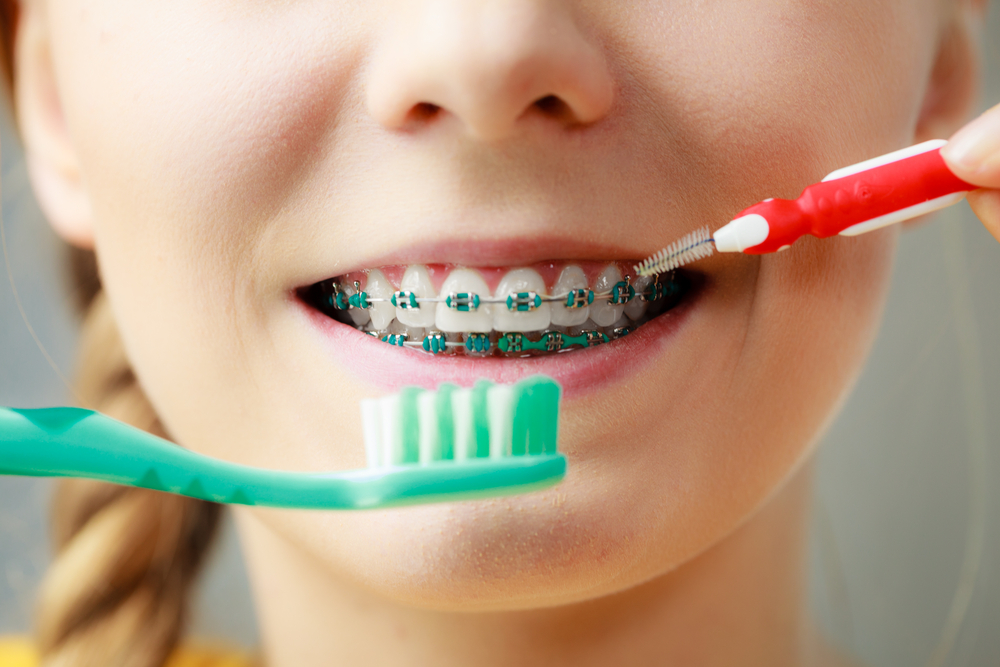
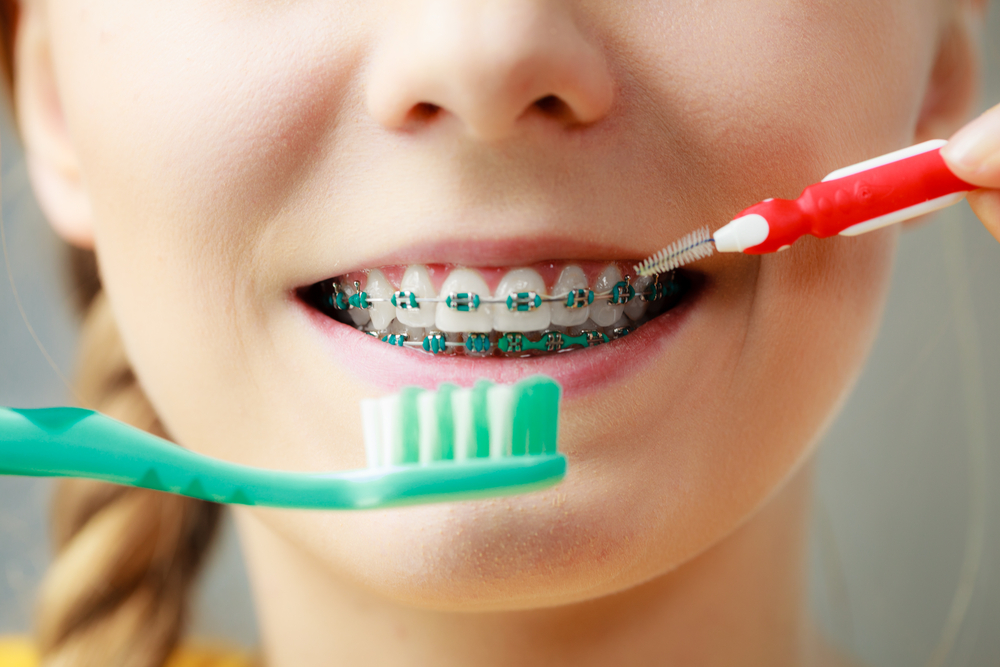
Getting braces is exciting and means your child or teenager is on their way to a straighter, healthier smile. It also means that brushing and flossing will be a little more challenging and plaque will have extra places to hide. Well, Kids Mile High Pediatric Dentistry is here to help! We’re sharing our best oral hygiene tips to ensure your child’s smile is as healthy and dazzling as possible when those braces come off.
While having poor oral hygiene any time can lead to cavities, having bad hygiene with braces really increases the risk of tooth decay and gingivitis. As we said, braces tend to trap food, bacteria and plaque. Good hygiene is essential because teeth move most effectively in a healthy oral environment. Additionally, in extreme cases, getting cavities with braces could mean having to have the braces taken off, so the decay can be treated.
How to Have Good Oral Hygiene With Braces
Now that we’ve discussed the consequences of poor oral hygiene with braces, the good news is, kids and teens can keep their teeth healthy during their orthodontic treatment with a few easy steps. Though flossing and brushing teeth with braces will require learning some new techniques, once kids get used to the process, it will become second nature.
With braces, your child will want to brush their teeth in the morning, after meals and snacks, and before bed. Yup, that’s a few more daily brushing sessions than usual.
As for how to brush your teeth with braces, use a soft-bristled toothbrush or an electric toothbrush and the toothpaste of your choice (the best toothpaste for braces is one that doesn’t contain whitening ingredients, as these can increase sensitivity and lead to uneven results).
Hold the toothbrush at a 45-degree angle. Start by gently brushing along the gum line. Then, brush every bracket, working on the top and bottom of the bracket separately. Wiggling the bristles back and forth a bit will help get between the wires. Give each individual tooth some attention and brush all of the surfaces of the teeth, including around those back molars. Be sure your child brushes for at least two full minutes.
Flossing with braces will be tricky at first because kids have to get under the wires in order to clean between their teeth. However, most patients acclimate quickly. While you can use regular dental floss on its own, the process will be much easier if your child or teen uses a floss threader.
Or, to save even more time, they can use special floss for braces, such as an orthodontic flosser or a product like SuperFloss. Regardless of what type of floss they opt for, flossing at least once daily is key.
Guide the pointed end of the floss threader under the braces wire and pull the floss through until it can be gripped with both hands. Position the floss between any two teeth. Floss up and down the side of one tooth, getting under the gumline, and then up and down the side of the other tooth.
Gently pull the floss out. Use the floss threader to get under the wire and in between the next set of teeth. Repeat this until the entire mouth has been flossed.
When flossing with Super Floss, the process will be the same. However, kids won’t need to thread the floss through the end since it’s already set up. They’ll simply guide the stiffened end under the braces wire and go through the same steps as above.
A Waterpik, or water flosser, sprays water in between the teeth, around the gums and around the braces brackets. While using a Waterpik for braces won’t replace regular flossing and will be an extra step, it’s an excellent tool for loosening stubborn food, getting the gums super clean and eliminating any lingering plaque. Most of our Denver braces patients are big fans.
If your child or teen does opt to use a water flosser for braces, go with an orthodontic tip. Have them use the water flosser before or after flossing the teeth with dental floss.
An interproximal brush, sometimes called a proxy brush or interdental brush, is a tiny brush meant to squeeze into tight spaces. Kids can use it to clean around their braces brackets and to remove any plaque or debris their toothbrush can’t reach. It’s also incredibly handy for dislodging food stuck in braces.
Swishing with mouthwash after flossing and brushing can help to loosen any trapped bits of food and get into those hard-to-reach places. What’s the best mouthwash for braces? Any alcohol-free, fluoride mouthwash or, if you’d prefer to skip fluoride, one that contains xylitol, will do the trick and help fight cavities. ACT Anticavity Mouthwash and Colgate Phos-Flur Ortho Defense Anticavity Mouth Rinse are both excellent options and usually top any list of the best mouthwash for braces.
Since brushing teeth with braces is recommended after meals and snacks, kids and teens will likely have to brush when they’re at school, at friends’ houses, etc. Make a travel kit that they can bring with them wherever they go. Your hygiene kit should include:
If kids or teens aren’t home and don’t have their toothbrush, they should rinse their mouth out really well with water after eating or drinking. This will whisk away some of the food debris and liquids so they don’t sit on the teeth for a prolonged period of time. Then, have kids brush their teeth as soon as they’re reunited with their toothbrush.
Regular exams and cleanings at the dentist are more important than ever when kids are in braces treatment. During professional cleanings, special tools are used to remove hardened plaque (tartar) that can’t be eliminated at home with a regular toothbrush and floss.
Dr. Paddy, Dr. Roger or Dr. Meredith will also be able to ensure your child’s mouth is healthy and cavity-free. If they spot an issue, intervening early will ensure your child’s braces treatment stays on track. During the exam, they can see how well your child is doing with their oral hygiene routine, too. Extra cleanings might be recommended throughout the year if hygiene is a problem.
By putting our oral hygiene tips into action and caring for their braces and smile, your child will get the outstanding results they deserve. Whether you’d like to learn more about braces for kids and teens, or you’re looking for a fun, friendly pediatric dentist, we’ve got you covered. Schedule a visit at Kids Mile High Pediatric Dentistry in Thornton, Denver or Englewood, CO today!


We all want a healthy, balanced diet for our kids. It’s no secret that a diet rich in veggies, fruit, whole grains, and clean protein goes a long way in growing healthy bodies and minds, including their teeth and gums! At Kids Mile High, we’re often asked what foods are good for children’s teeth so we’ve compiled this list of 7 important minerals and vitamins for teeth. Help your kids eat their way to a healthy smile for life!
You’re probably not surprised that calcium starts off our list of essential minerals and vitamins for teeth. After all, tooth enamel is mostly calcium, and getting enough calcium in your diet helps keep your child’s tooth enamel layer strong. The stronger the enamel, the more defense against tooth decay and cavities. You could say that Captain Calcium is a major player in maintaining your little ones’ healthy teeth!
Calcium is also good for bones as you might already know. But did you know that calcium is only stored in your bones and teeth? So with your bones gradually renewing every 10 years, it goes without saying that a steady intake of calcium is crucial for maintaining strong, dense bones throughout childhood — like your child’s jawbone. To get the most out of calcium-rich foods, health experts suggest pairing calcium intake with vitamin D. Now you know why the milk you buy at the supermarket is typically fortified with this tooth-friendly vitamin!
Foods With Calcium
Regardless of your child’s dietary restrictions or preferences, rest assured there’s plenty of foods with calcium to make sure your kids get the amount they need. Milk is a go-to for many kids, as are other dairy products like yogurt and cheese. That’s a pretty big win for teeth, since the calcium in milk products is also the most easily absorbed. Just double check the sugar content on your kids’ favorite dairy foods — milk products with too much sugar, like some flavored yogurts, can contribute to plaque build up. If cow’s milk isn’t part of your child’s diet, then fortified nut, soy or oat milks do the job, too.
In the veggies and fruits department, calcium-rich foods include broccoli, leafy greens like kale, bok choy and collard greens, soybeans, figs and oranges. You’ll get the most vitamins and minerals out of veggies if you cook them slightly; steaming or sauteing them is better than boiling.
Your little ones can also get calcium from beans, almonds, tinned salmon and fortified breads, breakfast cereals and oatmeal. It’s easy to include sources of calcium at every meal!
Here we’ve got calcium’s best friend! As we mentioned, vitamin D is an important partner in absorbing calcium from your food, moving it from your child’s gut and depositing it in your bones. In this way, vitamin D helps build bone density. You can think of calcium and vitamin D like Batman and Robin: they can do amazing things on their own but they’re more effective together! Vitamin D is key to a diet for healthy teeth; it contributes to fully developed teeth and protects against tooth decay and gum disease.
How to Get Vitamin D
Getting your kids outside isn’t just about taking a break from screen time. With just 15 minutes of direct sunlight on your skin, your body naturally makes vitamin D. That’s why it’s sometimes called the “sunshine vitamin.” Keep in mind that if you live in a seasonal place like we do in Colorado, you most likely have to stay outside in direct sunlight for longer than 15 minutes in the colder months. So when those gray skies or freezing temperatures aren’t so inviting, we, your Englewood, Central Park and Thornton pediatric dentists suggest you get your vitamin D from food. As one of the crucial vitamins for healthy teeth, your kids can get their vitamin D from eggs, fish, red meat, fortified milks, cereals and breads.
A diet for healthy teeth should include potassium. Just like vitamin D, it improves bone mineral density. Potassium also plays a defensive role: working with magnesium, it prevents your blood from becoming too acidic, which can cause calcium to leach from your bones and teeth. Potassium is also essential in blood clotting and helping gum tissue heal more quickly. If your child’s gums bleed a little from a baby tooth falling out, they’re new to flossing or they experience a tooth injury, potassium will help them heal faster.
Potassium-rich Foods
More than likely, the first potassium-rich food that comes to mind is… bananas! And you’d be right. Bananas are an easy source of potassium.They’re a great, soft first food for babies and an easy grab-and-go snack for toddlers and older kids. We all benefit from having bananas in our diet!
Some other potassium options to include in a diet for healthy teeth are: dark leafy greens, potatoes, avocados and prunes. Dairy products like milk, yogurt and cheese also contain the potassium that kids need for healthy teeth and gums.
While it might not come up as often in conversation as other minerals and vitamins for teeth, phosphorus is pretty important. Just like vitamin D, phosphorus helps you get the most out of your calcium intake so that your teeth are as strong as possible. This mineral helps your child rebuild and strengthen their tooth enamel against plaque and cavities.
Foods with Phosphorus
You’ll find phosphorus in many of the foods that also have calcium and vitamin D. Fortified milk and milk products, seafood like tuna and salmon, red meat, beans and lentils, nuts and whole grains are all high in phosphorus.
If vitamin D, calcium, potassium and phosphorus act like teeth builders, Vitamin K acts like a teeth protector in the family of minerals and vitamins for teeth. Vitamin K helps block substances that weaken bones and teeth and assists in your child producing osteocalcin, a protein that supports bone strength. Vitamin K also contributes to the healing process, kind of like potassium.
What to Eat for Vitamin K
That kale salad or spinach frittata has your child’s name on it! Again, leafy greens are a vitamin win. Your child can also find vitamin K in broccoli, eggs, hard cheeses, pork and chicken.
When we’re talking about vitamins for teeth, we can’t forget about the gums! Vitamin C is super important in helping strengthen your child’s gums and all the soft tissue in their mouth. Strong connective tissue in your kids’ gums keeps their teeth firmly in place, and helps prevent gingivitis and gum disease.
Foods with Vitamin C
Chances are, you know that citrus fruits are a rich (and kid-approved!) source of vitamin C. But did you know that you can also find vitamin C in potatoes, leafy greens, berries and peppers? When parents ask Dr. Paddy, Dr. Roger or Dr. Meredith about vitamins for strong teeth, we follow nutritionists’ rule of thumb: eat the rainbow! Colorful fruits and veggies pack a punch when it comes to being great for teeth and vitamin C.
If you’re wondering about the best drinks for teeth, we know that orange juice has vitamin C, as well as potassium and vitamin A. But as your Denver pediatric dentists, we agree with the American Academy of Pediatrics about fruit juice: it’s better to limit your child’s intake. Fruit juices have a lot of sugar without the fibre to balance it, so we recommend getting your vitamin C from whole fruits and veggies instead.
No post about vitamins for teeth should forget to mention vitamin A. Most people associate this vitamin with maintaining healthy eyes and good eyesight but vitamin A also contributes to healthy teeth, too. Vitamin A is known for helping you keep a healthy amount of saliva in your mouth, which helps bring down the higher acidity in your mouth to a more neutral or alkaline pH after you’ve eaten. This can help prevent erosion of your child’s tooth enamel, and therefore, they’re less susceptible to tooth decay.
Foods with Vitamin A
Your child’s daily dose of vitamin A can come from fish, egg yolks, or — we see a trend here! — leafy green veggies like spinach and kale. When it comes to vitamin A, an easy way to remember what foods are good for your teeth is thinking “orange”: orange foods have lots of beta-carotene, which turns into vitamin A in your body. So if your child likes oranges, apricots, cantaloupe, carrots or sweet potatoes, you’ve got vitamin A in the bag!
It goes without saying that kids can get their vitamins for healthy teeth through a variety of foods and the teeth-friendly foods we’ve covered here can make up any meal. But, some parents worry a balanced diet isn’t enough and ask the team at Kids Mile High if their kids should also take vitamin supplements. Dr. Paddy, Dr. Roger and Dr. Meredith are always happy to talk with parents about this. We know that sometimes kids just aren’t into some of the foods that are good for their teeth. We’re here to talk about how we can all work together to provide vitamins for healthy, strong teeth on the daily. Contact us at our Englewood, Central Park or Thornton offices to get the conversation started.